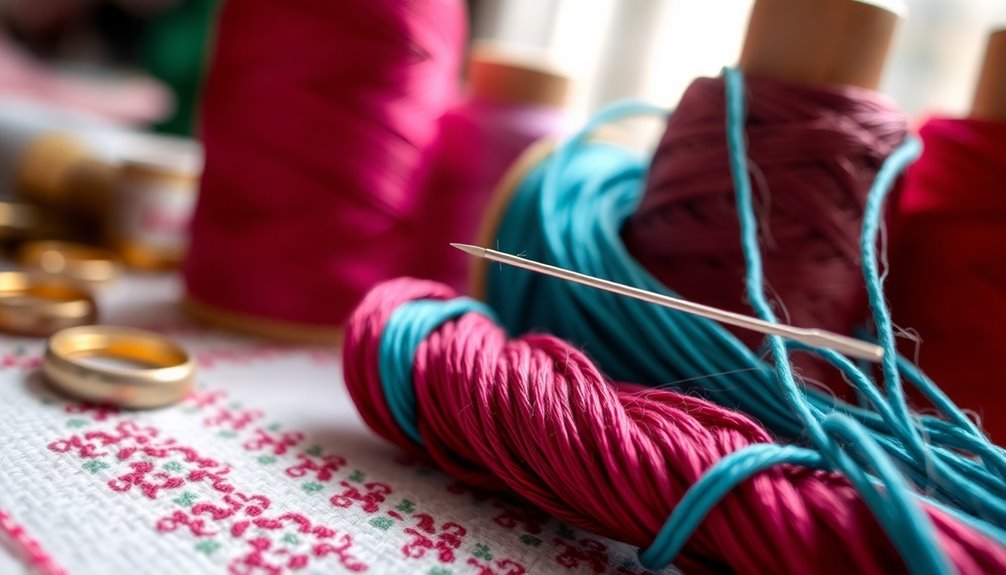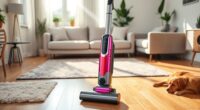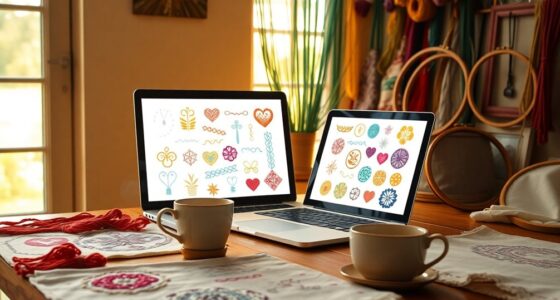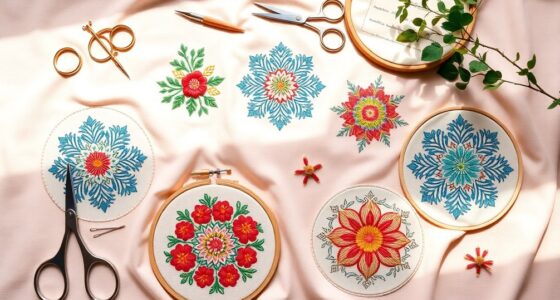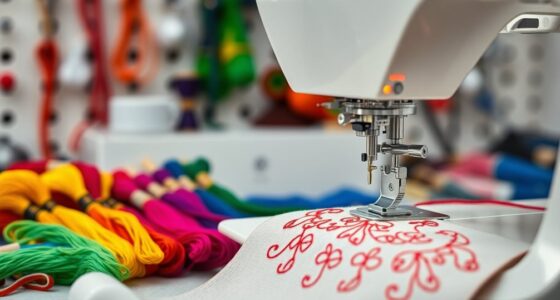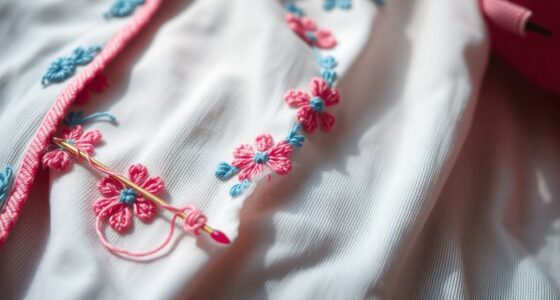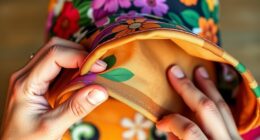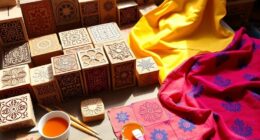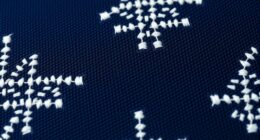Yes, you can sew with embroidery thread, but it's not ideal for seams due to its lower strength compared to regular sewing thread. It's best suited for decorative stitches and embellishments instead. You'll need to adjust your machine's tension and use the right needle, like an embroidery needle, for best results. If you're curious about the different types of embroidery thread and tips for using it effectively, there's more to explore on this topic!
Key Takeaways
- Yes, embroidery thread can be used for decorative stitches and embellishments but is not recommended for seams due to lower strength.
- Adjust your sewing machine's tension for optimal results when using embroidery thread to prevent issues like puckering.
- Use suitable needle types, such as embroidery or topstitching needles, to reduce the risk of thread breakage.
- Polyester embroidery thread is strong and ideal for decorative applications, while rayon offers a beautiful sheen but is less durable.
- Always test on scrap fabric before starting your main project to ensure the thread works well with your chosen materials.
Can You Use Embroidery Thread in a Sewing Machine?
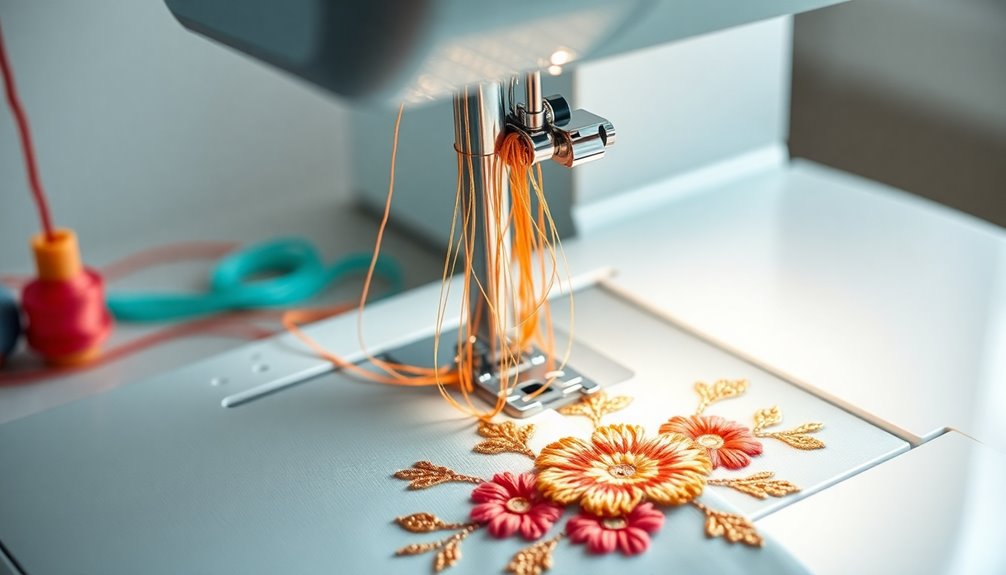
Have you ever wondered if you can use embroidery thread in your sewing machine? The answer is yes, but with some caveats.
Embroidery thread is great for decorative stitches, free-motion embroidery, and topstitching, but it's not recommended for seams due to its lower strength compared to regular sewing thread.
You'll need to adjust the machine's tension and use a suitable needle, like an embroidery or topstitching needle, to avoid breakage.
Keep in mind that embroidery thread is softer and more lustrous, designed for higher speeds, which might cause issues in dense designs if not tested.
Always do a waste cloth test first to ascertain compatibility with your fabric, and monitor your stitching process for best results.
What About Hand Embroidery Floss?
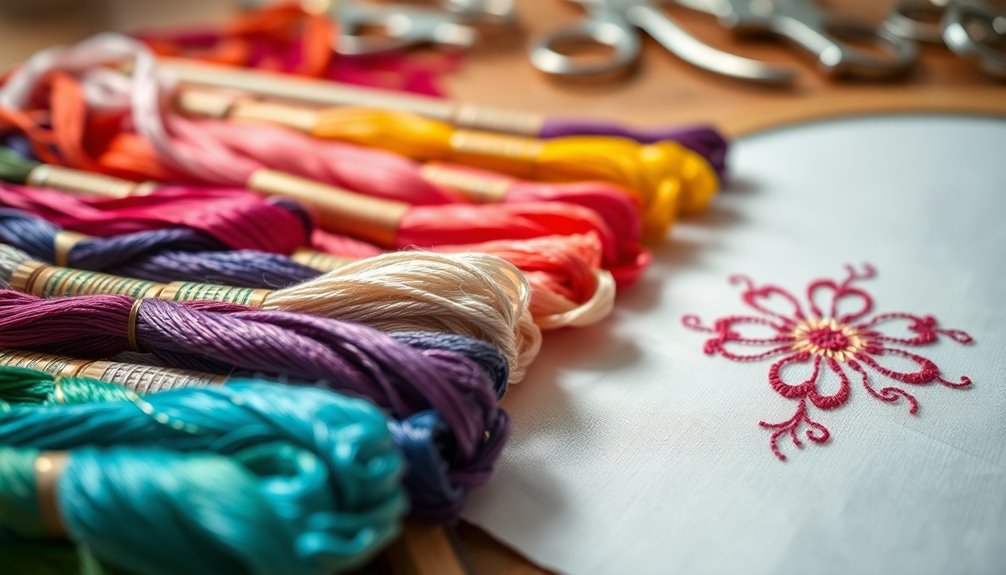
Using hand embroidery floss in your sewing machine can be a fun way to add unique embellishments to your projects. Just remember to separate the strands and use a single strand for compatibility. Here's a quick guide to help you understand the basics:
| Aspect | Hand Embroidery Floss | Standard Sewing Thread |
|---|---|---|
| Thread Strength | Lower | Higher |
| Ideal Use | Decorative purposes | Seams |
| Winding Requirement | Yes | No |
| Time Consumption | More | Less |
| Adjustments Needed | Yes | Minimal |
While you can use embroidery floss for decorative purposes, it's not strong enough for seams. So, be cautious when sewing functional garments!
Embroidery Thread vs. Sewing Thread

While both embroidery thread and sewing thread serve important roles in textile arts, they differ markedly in composition and purpose.
Embroidery threads are usually made from rayon or polyester, giving them a softer, more lustrous finish than regular sewing thread. This quality makes them ideal for decorative applications, especially in machine embroidery.
However, embroidery thread isn't as strong as sewing thread, which is designed for seams and can withstand stress in garment construction.
You'll also find that polyester embroidery thread produces minimal lint and shrinks less during washing.
Plus, embroidery threads offer a wider color palette, allowing for more creative designs compared to the fewer options available in regular sewing thread.
Choose wisely based on your project's needs!
Types of Embroidery Thread You Can Use for Sewing
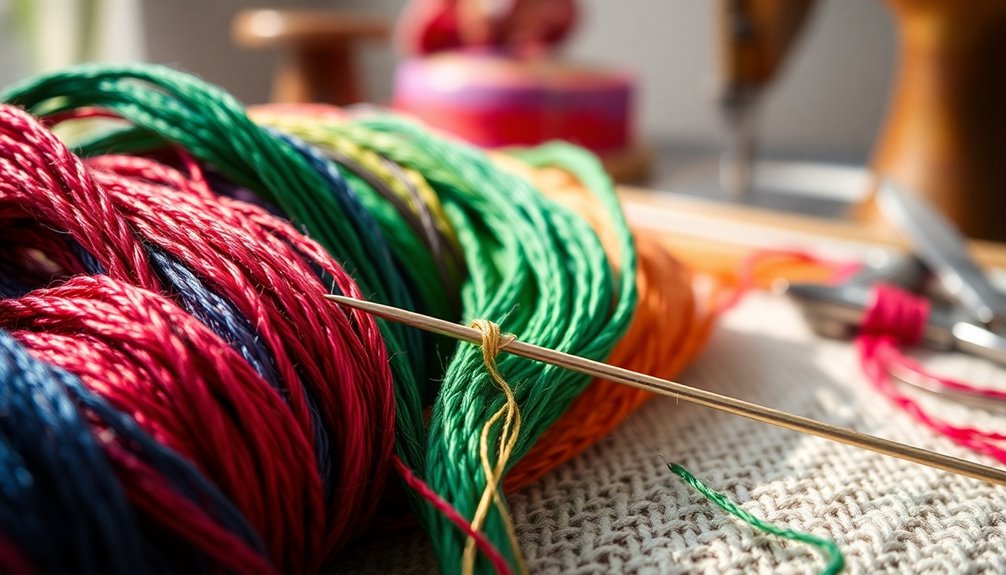
When selecting the right type of embroidery thread for your sewing projects, it's essential to reflect on the specific qualities each type offers.
Polyester embroidery thread is strong and provides a vast range of embroidery thread colors, making it a great choice for decorative applications.
In contrast, rayon embroidery thread boasts a beautiful sheen but is less durable, so reserve it for low-stress seams.
If you prefer a natural option, cotton embroidery thread mimics regular sewing thread, perfect for a matte finish.
Consider specialty embroidery threads, like metallic or variegated options, to enhance your projects, though they may require specific needle types and adjustments on your embroidery machines.
Finally, don't forget about embroidery bobbin thread for lightweight stitching.
Tips for Sewing With Machine Embroidery Thread
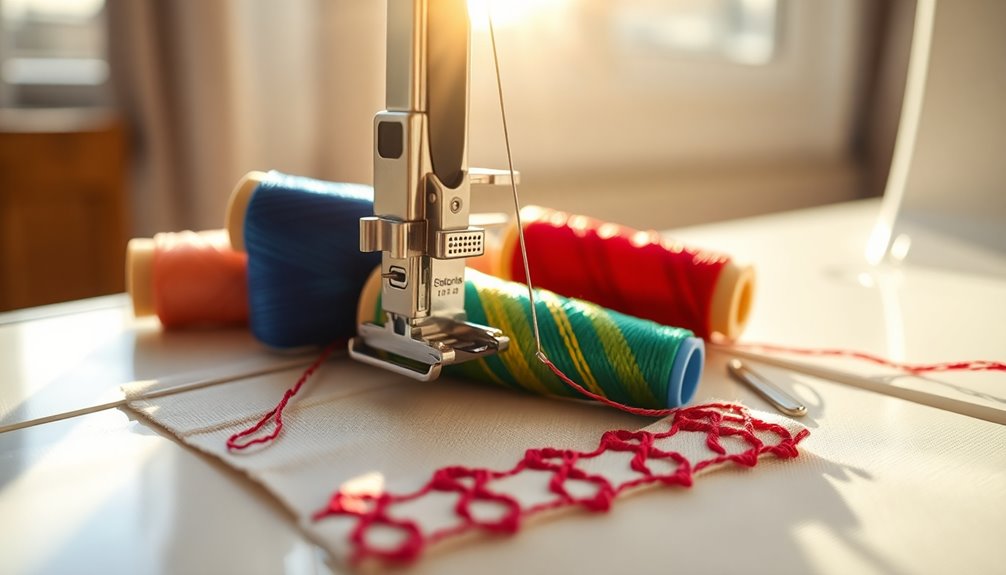
To achieve the best results in your sewing projects, it’s crucial to pay attention to how you use machine embroidery thread. Selecting the right thread weight can make a significant difference in the quality of your final product, affecting everything from tension to overall appearance. For optimal outcomes, consult the ultimate thread weight chart, which provides guidance on matching thread thickness with various fabrics and project types. This resource will help you make informed decisions, ensuring that your embroidery shines beautifully and lasts for years.
First, use an embroidery needle, like a Schmetz size 75/11, since the thread is thicker than normal sewing thread. This will help reduce breakage.
Next, adjust the machine tension based on your fabric and bobbin thread, as embroidery thread may require different settings for ideal results.
Sew at a slower speed to prevent disconnections and minimize fabric puckering.
Before starting your main project, conduct a waste cloth test on scrap fabric to assess how the thread behaves.
Frequently Asked Questions
Is Embroidery Thread the Same as Sewing Thread?
No, embroidery thread isn't the same as sewing thread.
You'll notice that embroidery thread is often softer and shinier, designed for decorative stitching rather than structural seams.
It's typically made from rayon or polyester, while sewing thread usually consists of cotton or blends.
Sewing thread is thicker and more durable, making it better for seams.
If you're looking to add embellishments, though, embroidery thread offers a wider variety of colors.
Can Embroidery Thread Be Used for Hand Sewing?
Oh sure, why not use embroidery thread for hand sewing?
It's only like trying to run a marathon in flip-flops! You can technically do it, but you'll want to separate a strand for best results.
Just remember, it's more about decoration than durability. So, if you're aiming for a strong seam, you might want to rethink that choice.
Always test on scrap fabric first—you'll save yourself a lot of headaches later!
Can You Use Embroidery Needles for Regular Sewing?
Yes, you can use embroidery needles for regular sewing, but keep in mind they're designed for thicker threads.
While they might work, you won't get the same precision as with standard sewing needles, especially on lighter fabrics.
If you're working on decorative stitches or embellishments, embroidery needles can enhance your results.
Just remember to choose the right size for your thread and fabric to achieve the best outcome.
What Can Embroidery Thread Be Used For?
When it comes to embroidery thread, think of it as a painter's palette for your fabric.
You can use it for decorative stitches, adding flair to quilts or garments. It's perfect for free-motion embroidery and intricate satin stitches, bringing your designs to life.
Just remember, it's not the strongest option for seams. Adjust your tension and needle type for the best results, and explore specialty threads for unique effects in your projects.
Conclusion
Just like a painter chooses the right brush for their canvas, you can select embroidery thread to add a unique flair to your sewing projects. It may not be the traditional choice, but it can bring your creations to life in unexpected ways. Embrace the versatility of threads, and remember that sometimes the unconventional path leads to the most beautiful masterpieces. So, don't hesitate—explore, experiment, and let your imagination stitch a vibrant tapestry of creativity!
